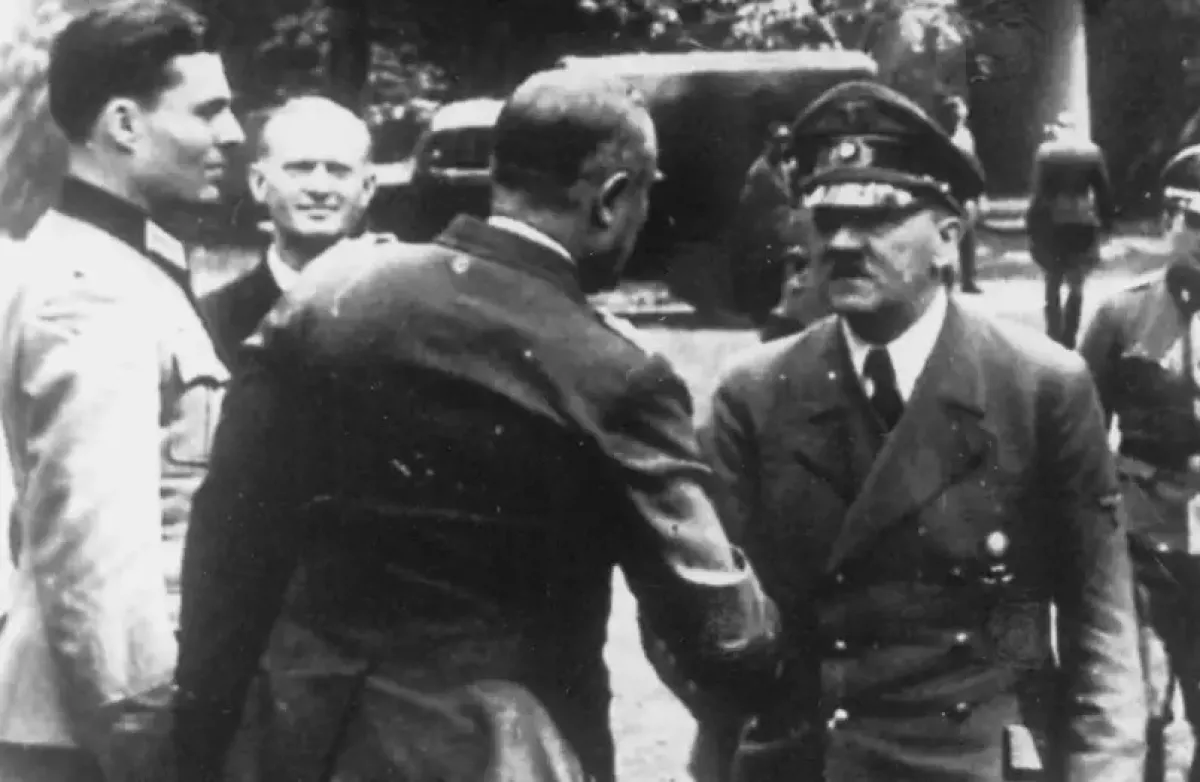Berlin officials honour 81st anniversary of assassination attempt plot to kill Hitler
On the 81st anniversary of the failed assassination attempt on Adolf Hitler, the German government commemorates the country’s resistance to Nazi tyranny. Culture Minister Wolfram Weimer led a tribute to the families of those who opposed the regime, recognizing both the courage of the conspirators and the heavy toll paid by their loved ones while Berlin’s Governing Mayor Kai Wegner, speaking at the central commemoration event at the Plötzensee Memorial, that the resistance fighters showed the entire world then that there was another Germany.
An article published in memory of the assassination attempt by the Deutsche Welle argues that no act of resistance had a more lasting impact than the attempt by Claus Schenk Graf von Stauffenberg.
On July 20, 1944, a bomb exploded inside the Wolf’s Lair, Hitler’s military headquarters in East Prussia. The bomb, planted by Stauffenberg—a German officer who had once supported the Nazis—was intended to kill Hitler. Convinced the only way to stop the dictator was through assassination, Stauffenberg became the leading figure in a broader plan to topple the regime.
He wasn’t just the would-be assassin, but the central organizer of a coup attempt supported by conservative elites, including top military officers, diplomats, and bureaucrats. The German officer had left the barracks and flew in a military aircraft toward Berlin shortly before the bomb was detonated, believing the "Führer" was dead. “Operation Valkyrie,” the military-led plan to seize control, was launched.
However, Hitler survived with minor injuries. A solid oak table shielded him from the blast, and the open windows—left ajar in the summer heat—helped dissipate the explosion’s force. Despite this, the coup might still have succeeded had everyone involved followed through decisively. But delays, miscommunication, and fear of exposure led many to hesitate—or abandon the effort altogether.
By nightfall, the putsch had failed. Hitler addressed the nation on the radio, claiming “providence” had saved him. Stauffenberg and several other conspirators were arrested and executed that same evening. Over time, around 200 people involved in the plot were killed.

Historian Wolfgang Benz argues the lack of support from prominent military figures—such as General Erwin Rommel—was a key reason for the failure. A respected leader at the helm might have persuaded the public that removing Hitler was justified, he suggests.
There were other attempts to resist Hitler: Georg Elser, a carpenter, nearly killed him with a homemade bomb in 1939; the White Rose, a student group, distributed anti-Nazi leaflets. Yet, for decades after the war, Stauffenberg and his co-conspirators were still labeled as traitors.
Culture Minister Weimer emphasized that resistance includes more than those who planted bombs. Families of the resisters also showed bravery—and often paid dearly. He warned against confusing moral courage with loud protest, reminding citizens that true integrity can grow quietly, like those who act while others look away. Stauffenberg’s own wife, for example, was initially denied the pension typically granted to military widows.
Only years later were the conspirators officially honored. Streets, schools, and barracks were renamed after them. On July 20, flags now fly at public buildings, and the Bundeswehr, Germany’s modern armed forces, swears in new recruits in memory of Stauffenberg and his circle, aligning democratic values with historical resistance.
Yet, historian Johannes Hürter notes that Stauffenberg was not a democrat in the modern sense. He envisioned an authoritarian future for Germany, not the parliamentary democracy enshrined in today’s Basic Law. While Stauffenberg has become the symbol of German resistance, others played vital roles too—Jews, communists, clergy, artists, partisans. Many who resisted in silence remain forgotten.
However, not everyone views Stauffenberg as a hero, as the DW article points out.
"Wolfgang Benz makes a slightly less harsh judgment: "Under any circumstances, Germany would have become a constitutional state again. But democracy as we know it, as it was established in the Basic Law constitution, was not the vision of the July 20 conspirators.
Many Germans today think first of July 20, 1944, when it comes to the resistance against National Socialism. Claus Schenk Graf von Stauffenberg, as a result, has become its face. But there were many other heroes who rebelled against the terror of the Nazi regime: Jews, communists, people in the church, artists, partisans. There were certainly also people who resisted in silence and whose deeds, unlike those of the July 20 attackers, have since been forgotten."
By Nazrin Sadigova








